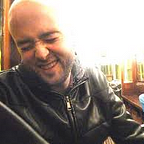Wasp’s specific tastes make it an elite imported fruit-fly assassin
We’ve covered spotted-wing Drosophila, or SWD, before — but this is one of the many species that deserve a revisit.
For a quick recap, SWD is a tiny fruit fly of Asian origin, it’s invaded almost everywhere, it can lay its eggs in soft fruit that’s yet to hit ripeness where other fruit flies cannot, and as such is a big threat to our summer berries and cherries.
So, what’s new? Well, one of the problems with tackling SWD is one common to many invasive species: it’s come so far from ‘home’ that it has few enemies in its novel, food-filled playground. This kind of issue often leads scientists to consider whether there might be wisdom in importing some from elsewhere — or classical biological control, as it’s known in the business.
A wasp on a mission
Enter the not-so catchily-named G1 Ganaspis cf. brasiliensis — a parasitoid wasp, also tiny, from SWD’s original Asian fruit-hunting grounds. Most crucially, it has a tendency towards laying its eggs in the larvae of SWD, resulting in their death. Research has shown that the G1 genetic grouping within the species is that most likely to seek out SWD specifically.
Specificity is all-important when it comes to introducing predators or parasites to provide biological control of invasive pests. If the incomer isn’t as specific in its tastes as hoped, they can effectively ransack ecosystems by killing off native species. Don’t bring up cane toads in Australia.
Swiss banking on parasitic preference
Using a ‘semi-field’ experimental setup in cages placed in two locations, researchers in Switzerland set out to provide definitive evidence of just how host-specific G1 G. cf. brasiliensis is, faced with a choice of the larvae of SWD feeding on fresh fruit or the native fruit fly Drosophila melanogaster feeding on rotting fruit. This, in turn, would give a strong idea of how suitable it is to be let loose against Swiss SWD.
So, did they keep their parasitism narrow? You bet.
“The results were unequivocal” is not a phrase you get very often in scientific literature, but that’s what we get in this case. The researchers saw a 15% average parasitism rate of SWD larvae, and just a 0.02% rate in D. melanogaster — the latter representing just one single parasitized larva in the whole experiment. Call it a case of mistaken identity.
European releases gain momentum
These large-scale tests put something on a seal on previous lab work, which showed G1 G. cf. brasiliensis making very few attacks on anything that wasn’t SWD. With an application submitted to release the species in Switzerland, the case looks pretty strong.
Italy has been the first of the mark in this respect, beginning releases of our reassuringly picky parasitoid in 2021, and a request has also been approved in the United States. Next stop UK? Quite possibly.
SWD is considered the biggest threat facing UK fruit production, something that I can back up anecdotally from time spent working for a biological control supplies company. Boy did those SWD traps and liquid attractant fly off the shelves from spring through summer, as panic grew among fruit producers in tandem with the temperature. Perhaps there will be a new biological weapon on their side soon, flying with purpose in search of its massively preferred target.
